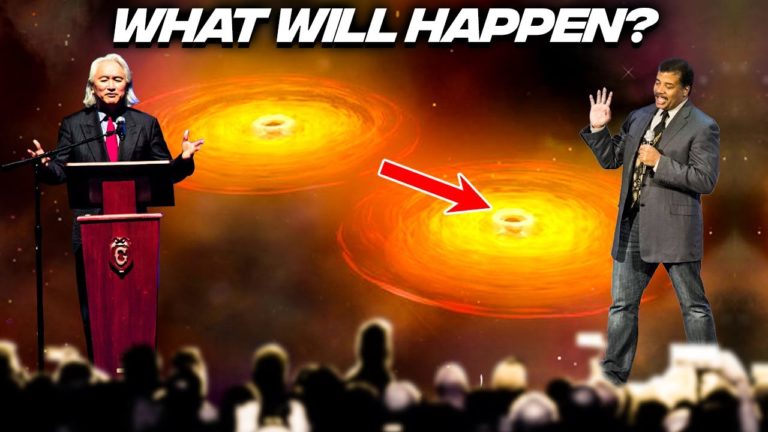Astronomers Left Speechless By This TERRIFYING Discovery!
Known as the voids of space, the black holes have always been scarier for astronomers. More than the millions and billions of mass than the sun, they eat up everything in its way from tiny grains to gigantic stars.
Things get even more scary when two of the massive black holes merge together. On such event has been discovered by the scientists where two massive black holes are going to collide creating the unimaginable. Can you imagine what power they are going to possess or how destructible it can be?
The scientists are expectant because this might unravel some greatest mysteries about the black holes. Welcome to Cosmos Lab. Your one station for all the news from space.
Most massive galaxies in the Universe contain supermassive black holes with masses ranging from millions to billions of Suns.
We don’t know how these massive, immensely dense objects formed, or what causes a percentage of them to begin eating the surrounding matter at extraordinarily fast rates, radiating copiously across the electromagnetic spectrum, and transforming their host galaxies into ‘active galactic nuclei.’
But now, astronomers say they have detected hints that two gigantic black holes with a combined mass of hundreds of millions of Suns are preparing for a cataclysmic merger as soon as 100 days from now in the heart of a galaxy 1.2 billion light-years from Earth.
If it happens, it will be the first time astronomers witness an event of this magnitude, it will be a defining moment in astronomy, providing a peek of a long-predicted but never seen mechanism for black hole formation. The prediction was made in a recent study by Ning Jiang and Huan Yang.
Huan Yang, a researcher at the Perimeter Institute in Waterloo, Canada, and co-author of the study, understands why some astronomers have shown skepticism regarding the upcoming merger. Telling the news, he said, “I think people have doubt, and that’s totally reasonable.
People are thinking, ‘ah, what if this thing doesn’t sustain?’ Yang collaborated with Ning Jiang of the University of Science and Technology of China to unravel this cosmic mystery.
They made the prediction by using the data collected from a survey telescope in California called the Zwicky Transient Facility. Other astronomers scrambled to arrange telescope observing time as soon as the publication emerged on the preprint server at the end of January. Team member Huan Yang says, “We’ve seen people act quite quickly.”
Do not forget to share your opinion with us to provide you with the best posts !




0 Comments